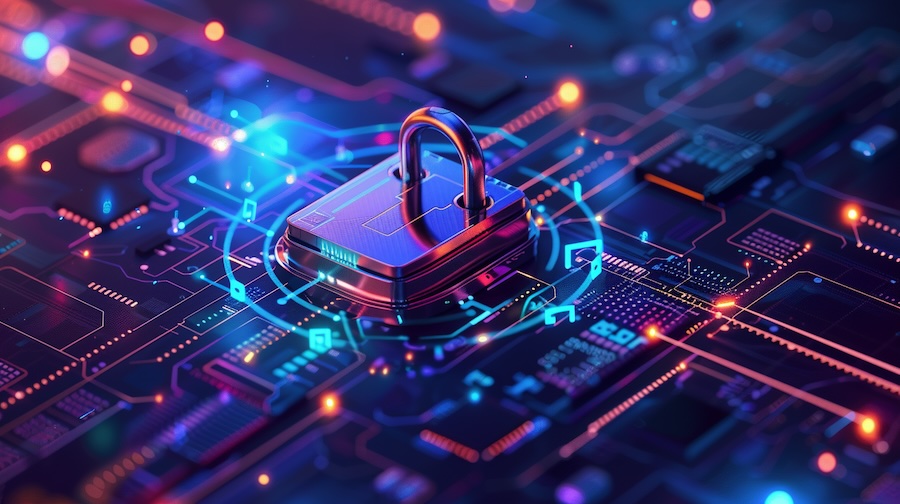We created this blog post for the EU-funded project “V2B: Creating NFT Opportunities on Metaverse for Art VET Trainees”, and our project reference number is 2022-1-DE02-KA210-VET-000080828. Coordinated by L4Y Learning for Youth GmbH in collaboration with Adana Cukurova Guzel Sanatlar and EMC Services Ltd, “Exploring the Metaverse: Digital Identity, Blockchain, NFTs & Crypto” is prepared related to the training framework in the introduction post.
This module, “Exploring the Metaverse”, covers a lot of ground and teaches students a lot about the metaverse and its main parts, such as digital identity, blockchain technology, non-fungible tokens (NFTs), and cryptocurrency. By unravelling the interplay of these elements, it offers an extensive understanding of how they coalesce to create a virtual reality realm with immense potential for various industries. We have thoughtfully designed this module for those intrigued by emerging technologies, digital innovation, and the ever-evolving landscape of online interactions. You can also find more blog posts in our R2 category. It is one of the posts.
Learning Objectives
- Define the metaverse and its core factors, including digital identity, blockchain technology, NFTs, and cryptocurrency.
- Understand the implicit operations of the metaverse across different diligence and sectors.
- Explain the role of digital identity in the metaverse and its impact on sequestration and security.
- Estimate the use of blockchain technology in establishing trust and decentralization within the metaverse.
- Explore the conception of NFTs and their part in enabling unique digital means and power in the metaverse.
- Examine the role of cryptocurrency as a means of exchange and value storehouse in the metaverse.
Introduction to the Metaverse
This chapter provides an overview of the metaverse and its significance in the digital age. It introduces the core factors of the metaverse, including digital identity, blockchain technology, NFTs, and cryptocurrency.The metaverse merges physical and digital realities into a collective virtual shared space. Here, users interact, socialize, and even create their own digital personas. Its role in shaping the future is immensely significant.
We’ll delve into the fundamental components that animate the metaverse, such as digital identity, blockchain technology, non-fungible tokens (NFTs), and cryptocurrency. These elements serve as the building blocks, enabling the metaverse to function as a vast and interconnected digital universe.
Join us in exploring this dynamic landscape. We’ll understand how the metaverse is set to transform our living, working, and playing in the digital realm.
The METAVERSE
The Metaverse concept has existed for some time but gained traction recently due to digital technology advancements. Essentially, it’s a virtual space where individuals engage in various activities. These include shopping, socializing, gaming, and even attending musicals. Still, what makes the Metaverse truly remarkable is that it isn’t just a place to go. It’s a brand-new way of living online that relies on blockchain, NFTs, and cryptocurrency. In this composition, we will explore the Metaverse, its crucial features, and how these arising technologies are transubstantiating the way we interact with each other online.
The term ‘metaverse’ originated in Neal Stephenson’s sci-fi novel ‘Snow Crash’. It described a virtual world for people to inhabit, akin to a more immersive internet. Today, ‘Metaverse’ refers to a collection of virtual worlds accessible via the internet.
The Metaverse’s idea centers on individuals creating an avatar, a digital version of themselves, to interact in virtual environments. This digital identity extends beyond just one virtual realm; it’s versatile across multiple platforms, offering users a seamless experience. Imagine this scenario: you attend a musical in one part of the virtual world, then effortlessly shift to a different space for a gaming session with friends. Throughout this experience, there’s no need to create new accounts or avatars for each activity.
Still, the Metaverse isn’t just about entertainment; it has real- world operations as well. For illustration, businesses could apply the metaverse to have virtual conferences or trade shows. Medical professionals could apply it to hold telemedicine movables, and preceptors could use it to hold virtual classes.
Exploring the Metaverse:Digital Identity in the Metaverse
This chapter explores the conception of digital identity within the metaverse and its counter accusations for sequestration, security, and stoner control. Moreover, it discusses the challenges and openings associated with managing and guarding digital individualities in a virtual reality terrain.
The Metaverse’s Identity Revolution
In the real world, you typically have one identity deeply connected to your physical existence. It’s like having a single character in a play. But in the metaverse, you can create and switch between multiple digital identities, each with its own unique features and capabilities. It’s akin to playing many roles in different plays simultaneously.
The Role of Blockchain
What makes these digital identities safe and versatile is blockchain technology. You might have heard of blockchain in the context of cryptocurrencies like Bitcoin. Still, it serves an even more profound purpose here. Blockchain is a decentralized and secure ledger that empowers you to control your personal data. Furthermore, digital identities stored on a blockchain are virtually impervious to duplication or tampering. This surpasses the security of traditional identity systems.
A World of Privacy and Control
With your digital identity in the metaverse, you’re the boss. You decide what information you want to share and with whom. It’s like having a secret identity for different situations, but you’re the one holding all the cards. This level of control over your digital identity provides a robust layer of privacy and security when you engage with others in the virtual world.
Shaping Your Identity
This shift to digital identity is monumental, detaching your identity from your physical presence and transcending geographical and societal limitations. Consequently, you can create and express diverse aspects of your digital self, making your identity more versatile and fluid.
The Blockchain Advantage
The heart of your digital identity is blockchain technology. Blockchain, a distributed ledger system, not only safeguards your identity but also acts as an incorruptible record-keeper. This robust technology offers a strong defense against identity theft and fraud.
Control and Responsibility
However, with this newfound power comes great responsibility. Managing your digital identity requires digital literacy and security awareness. Specifically, understanding how to protect your private keys, manage access rights, and make informed decisions about sharing your identity-related data is crucial in this self-sovereign identity landscape.
This chapter is your gateway to understanding digital identity in the metaverse. It highlights the incredible prospects it offers for privacy and security, alongside the challenges it poses. As you explore further, remember that your digital identity in the metaverse is a powerful tool that can provide both freedom and protection in your online interactions.
Blockchain Technology and the Metaverse
This chapter focuses on the role of blockchain technology in the metaverse, explaining how blockchain enables trust, transparency, and decentralization. Additionally, it explores various use cases of blockchain in the metaverse, such as virtual property ownership and secure transactions.
The use of blockchain technology is critical to the functioning of the metaverse. Blockchain is a decentralized and inflexible way that enables secure deals to take place between individualities without the need for interposers. Also, because blockchain is transparent, all deals are visible to anyone on the network, promoting trust between parties.
In the metaverse, blockchain technology is applied to confirm the ownership of assets, such as virtual land, items, and currency. Furthermore, digital assets can be stored on the blockchain, ensuring their authenticity and provenance. Consequently, this means that individuals can purchase, sell, and trade virtual assets with confidence.
Blockchain is an emerging technology with many advantages in an increasingly digital world:
- Highly Secure
It uses a digital signature feature to conduct fraud-free transactions, making it impossible for other users to corrupt or change the data of an individual without a specific digital signature.
- Decentralized System
Conventionally, you need the approval of regulatory authorities like a government or bank for transactions; however, with Blockchain, transactions are done with the mutual consensus of users, resulting in smoother, safer, and faster transactions.
- Automation Capability
It is programmable and can generate systematic actions, events, and payments automatically when the criteria of the trigger are met.
Exploring the Metaverse:NFTs in the Metaverse
This chapter delves into the conception of non-fungible tokens (NFTs) and their role in the metaverse, examining how NFTs enable unique digital assets, akin to artwork and virtual real estate. Moreover, it explores the profound impact of NFTs on digital ownership and monetization.
NFTs
Non-fungible Tokens (NFTs) are a form of digital asset that’s unique and empirical, making them ideal to utilize in the metaverse. NFTs can be anything from virtual land to exclusive particulars, similar as apparel or munitions. The use of NFTs enables individuals to have access to the power of digital means and indeed make new profit aqueducts by dealing with or renting them to others.
An NFT is created, or “minted,” from digital objects that represent both tangible and intangible items, including:
- Graphic art
- GIFs
- Videos and sports highlights
- Collectibles
- Virtual avatars and video game skins
- Designer sneakers
- Music
- One of the most important advantages of NFTs is that they give access to generators to monetize their work. For illustration, musicians can create NFTs that give exclusive access to their music or their virtual musicals. Also, artists can apply NFTs to sell digital art that’s unique and empirical.
Beyond Artists and Musicians
The influence of NFTs extends far beyond artists and musicians. NFTs have revolutionized the gaming industry, allowing players to buy, sell, and trade in-game assets and characters as NFTs. Similarly, virtual real estate, a burgeoning market in the metaverse, is being transacted as NFTs, with users acquiring and developing digital land within virtual worlds. Furthermore, sports franchises are exploring NFTs as a way to engage fans and offer unique collectibles related to their favorite teams and players.
The Potential Impact
NFTs have the potential to redefine how we think about ownership, authenticity, and value in the digital realm. This chapter will explore the profound implications of NFTs on digital ownership and monetization, delving into case studies that showcase the transformative power of these tokens across various industries. Consequently, join us as we embark on this journey to uncover the profound impact of NFTs in the metaverse, understanding how they are redefining the way digital assets are created, owned, and monetized in our increasingly interconnected digital universe.
Exploring the Metaverse: Cryptocurrency in the Metaverse
This chapter delves into the multifaceted role of cryptocurrency as a medium of exchange and a store of value within the metaverse. Specifically, it will provide a comprehensive understanding of different types of cryptocurrencies, their significance in the virtual landscape, and the myriad challenges and opportunities tied to their adoption and integration.
The Role of Cryptocurrency in the Metaverse
Eventually, cryptocurrency is another critical factor of the metaverse. Cryptocurrency gives the opportunity to individuals to purchase, vend, and trade goods and services in the metaverse, just as it is in the physical world. Also, because cryptocurrency is decentralised, it gives individualities more control over their finances, icing maximum sequestration and security.
Cryptocurrency stands as one of the pivotal components of the metaverse, offering users the ability to engage in transactions, both in the purchase and sale of virtual goods and services, mirroring the transactions in the physical world. What makes cryptocurrency particularly enticing in the metaverse is its decentralized nature, which empowers individuals with enhanced control over their financial assets, thereby ensuring maximum privacy and security in their virtual interactions.
Exploring Popular Cryptocurrencies
A plethora of cryptocurrencies have emerged in the digital era, each with its unique characteristics and applications. Among them, some of the most renowned cryptocurrencies include Bitcoin, Litecoin, and Ethereum. Cryptocurrencies, at their core, are digital currencies constructed using sophisticated encryption algorithms. The integration of encryption technology endows cryptocurrencies with dual functionality, serving as both a medium of exchange and a virtual accounting system. To engage with cryptocurrencies, individuals require a cryptocurrency wallet. These wallets may be in the form of software, often provided as a cloud-based service, or they can be stored on a computer or mobile device. These wallets serve as the instrument through which individuals store their encryption keys, confirming their identity and linking them to their cryptocurrency holdings.
Cryptocurrency as a Game Changer
In the metaverse, cryptocurrency goes beyond its role as a transactional tool; it also acts as an in-game currency. This functionality allows individuals to acquire virtual goods and services within the metaverse, underlining the real-world value of the currency employed in these digital realms. The metaverse, therefore, opens up new and lucrative opportunities for individuals and businesses alike. The capacity to convert digital assets, avatars, or in-game collectibles into cryptocurrency underscores the dynamic potential for creating value in this expanding virtual universe.
Challenges and Opportunities
While the metaverse offers a thriving landscape for cryptocurrency use, it also presents a myriad of challenges. Security concerns, fraud, and regulatory issues loom large in the decentralized world of cryptocurrencies. However, these challenges come hand in hand with innovative opportunities. As individuals become more accustomed to engaging with cryptocurrency within the metaverse, new business models, financial services, and platforms emerge. Thus, this chapter will delve into these challenges and opportunities, providing learners with a comprehensive understanding of how cryptocurrency is shaping the economic landscape of the metaverse and what the future may hold for these digital currencies.
Join us on a journey through the intricate terrain of cryptocurrency within the metaverse as we uncover its evolving role and significance. Moreover, we will examine the diverse array of cryptocurrencies at play and, furthermore, weigh the challenges and opportunities that come with the decentralized financial ecosystem in the digital age.
Exploring the Metaverse: Digital Identity, Blockchain, NFTs & Crypto: Conclusion
In conclusion, exploring the metaverse reveals a new way of living online, powered by blockchain, NFTs, and cryptocurrency. It offers a variety of benefits, including reduced sequestration and security online, new profitable openings, and more immersive experiences. While the metaverse is still in its immaturity, it’s clear that it has significant implicit for completely transforming the way we interact with one another online. As technology continues to develop, it’ll be interesting to see how the metaverse evolves and what new openings it brings.
Exploring the Metaverse: References and Resources
- Virtual Reality and the Metaverse: Exploring the Possibilities (e-book)
- The Metaverse Revolution: Unlocking the Future of Digital Experiences (online course)
- Understanding Blockchain Technology: A Comprehensive Guide (video series)
- “The Metaverse: A Deep Dive” by Michael Hodapp and William Mougayar
- “Blockchain Basics: A Non-Technical Introduction in 25 Steps” by Daniel Drescher
- “Cryptoassets: The Innovative Investor’s Guide to Bitcoin and Beyond” by Chris Burniske and Jack Tatar
- The Metaverse Roadmap Overview: Pathways to the Future presented at the Metaverse Summit










